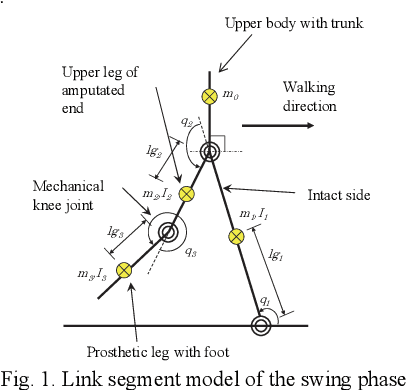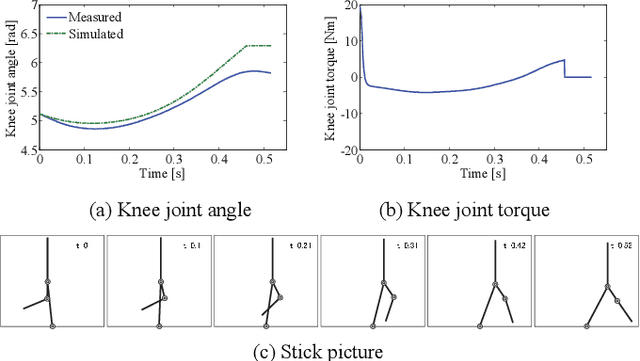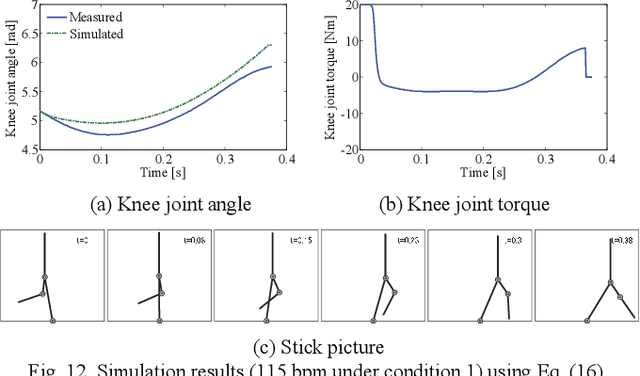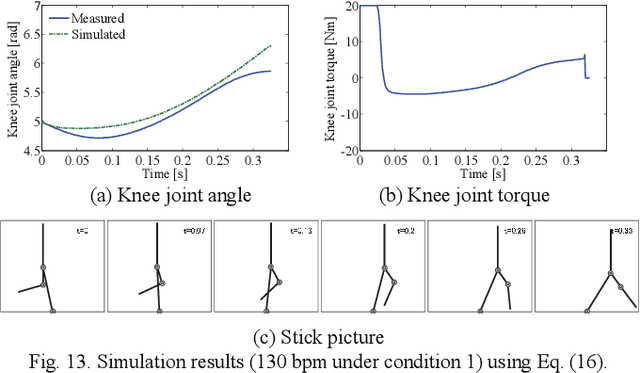Knee Motion Generation Method for Transfemoral Prosthesis based on Kinematic Synergy and Inertial Motion
Paper and Code
Nov 02, 2017



Previous research has shown that the effective use of inertial motion (i.e., less or no torque input at the knee joint) plays an important role in achieving a smooth gait of transfemoral prostheses in the swing phase. In our previous research, a method for generating a timed knee trajectory close to able-bodied individuals, which leads to sufficient clearance between the foot and the floor and the knee extension, was proposed using the inertial motion. Limb motions are known to correlate with each other during walking. This phenomenon is called kinematic synergy. In the present study, we measure gaits in level walking of able-bodied individuals with a wide range of walking velocities. We show that this kinematic synergy also exists between the motions of the intact limbs and those of the knee as determined by the inertial motion technique. We then propose a new method for generating the motion of the knee joint using its inertial motion close to the able-bodied individuals in mid-swing based on its kinematic synergy, such that the method can adapt to the changes in the motion velocity. The numerical simulation results show that the proposed method achieves prosthetic walking similar to that of able-bodied individuals with a wide range of constant walking velocities and termination of walking from steady-state walking. Further investigations have found that a kinematic synergy also exists at the start of walking. Overall, our method successfully achieves knee motion generation from the initiation of walking through steady-state walking with different velocities until termination of walking.
 Add to Chrome
Add to Chrome Add to Firefox
Add to Firefox Add to Edge
Add to Edge